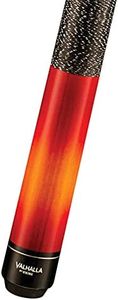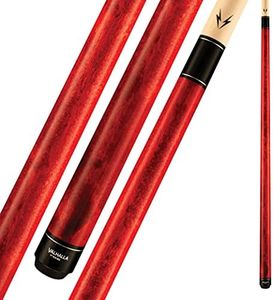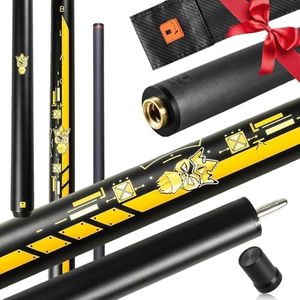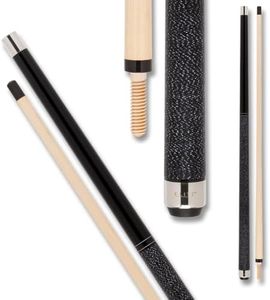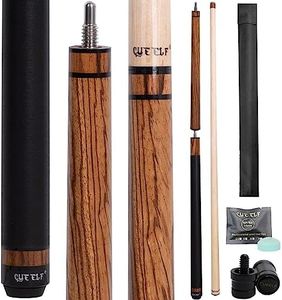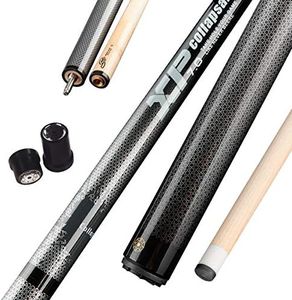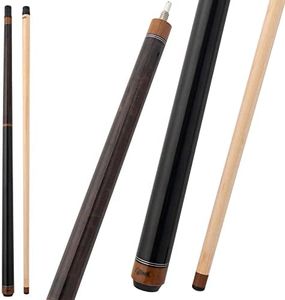We Use CookiesWe use cookies to enhance the security, performance,
functionality and for analytical and promotional activities. By continuing to browse this site you
are agreeing to our privacy policy
8 Best Break Cues
From leading brands and best sellers available on the web.Buying Guide for the Best Break Cues
When shopping for break cues, it's important to focus on features that can enhance your breaking power, control, and consistency. A break cue is a specialized pool cue designed for the break shot at the start of a game. Its build and materials are different from playing cues, with the primary purpose being to deliver maximum force in a controlled manner. Understanding the main specifications will help you select a cue that matches both your strength and style, leading to better performance and more enjoyable play.WeightWeight refers to how heavy the cue is, and it plays a key role in the amount of power you can deliver on the break. Break cues typically range from 18 to 25 ounces. Lighter cues (18-20 oz) allow quicker acceleration but may require more effort to achieve maximum impact, making them suitable for players who prefer speed over raw force. Mid-range weights (21-23 oz) strike a balance between speed and power and are the most popular for many players. Heavier cues (24-25 oz) transfer more mass to the cue ball, which can result in a harder break but may be harder to control for players with less strength. Consider your comfort level—if you struggle to control heavier cues, opt for a lighter one; if you want more breaking force and can keep your aim steady, try a heavier cue.
Tip HardnessTip hardness determines how much energy from your stroke is transferred to the cue ball and how much grip you have during impact. Break cues usually come with hard or extra-hard tips, which are less likely to compress and absorb energy compared to softer tips. Hard tips maximize energy transfer, which is perfect for breaking, but they offer less spin control. If you value power above all, select the hardest tip. If you want a touch more control and are comfortable with advanced break techniques, you might choose something a little softer, but most break cues will be on the harder end.
Shaft DiameterThe shaft diameter is the thickness of the cue's shaft, typically measured at the tip. Break cue shafts are usually a bit thicker than standard playing cues, ranging from 12 to 14 millimeters. Thicker shafts (around 13-14mm) tend to be stiffer, giving you more force and reducing unwanted flex during the break shot. Thinner shafts offer more finesse and are lighter, but might not provide as much breaking power. If you need solid power and more forgiveness on your break, a thicker shaft is best. If you are smaller-built or prefer a lighter, more precise feel, choose a slightly smaller diameter.
MaterialThe material of a break cue affects its durability and how it transfers energy. Most break cues are made from hard woods like maple or from advanced materials like fiberglass or carbon fiber. Wood offers a traditional feel and absorbs some shock, while composite materials often provide greater durability and rigidity, translating to more power during breaks. If you like classic cues and value a softer feel, choose wood. If you want something cutting-edge that can handle heavy use without warping, try modern materials.
GripGrip refers to the area where you hold the cue and can be made of different materials like leather, rubber, or can simply be bare wood. The grip helps you maintain control during the powerful action of a break shot. A tacky or textured grip provides more hold, reducing slippage, while a smooth or bare grip allows for freer hand movement. If your hands tend to sweat or you want maximum hold, pick a cue with a textured or rubberized grip. If you like a traditional, smooth-slide feel, bare wood or linen wrap is best.
